#conversion api
Text
I will setup facebook pixel google analytics 4 migration conversion API with GTM
Do you plan for Facebook pixel setup, conversion API, product catalogs, enhanced e-commerce tracking, or UTM? Google Tag Manager and Google Analytics 4. Ready to boost your business?
What is Facebook Pixel, UTM, Google Analytics 4, and GTM?.
The Facebook Pixel, UTM, Google Analytics, and tag manager are codes that are placed on your website, page, business page, and service related website. It collects and gathers data that converts your ads, optimizes ads, and builds targeted traffic and strong demographics for future ads.
What will I give for your business, service, and targeted audience?
Setup Facebook pixel.
Setup conversion API With GTM.
Conversion API Setup and integration.
Automatic shop catalog and optimization.

#facebookpixelsetup#facebookads#facebook#gtm#google analytics#conversion api#facebook marketing#facebook pages
12 notes
·
View notes
Text
How to set up Google Analytics 4, Tag Manager, Google Ads Conversion Tracking, and Facebook Pixel

Setting up Google Analytics 4 (GA4), Google Tag Manager (GTM), Google Ads Conversion Tracking, and Facebook Pixel involves several steps. Here's a step-by-step guide on how to set up these tools:
1. Google Analytics 4 (GA4):
Google Analytics 4 is the latest version of Google Analytics. It provides more advanced tracking and reporting capabilities compared to Universal Analytics.
Step 1: Create a Google Analytics 4 Property
Log in to your Google Analytics account.
Click on "Admin" at the bottom left.
In the "Property" column, click "Create Property."
Follow the setup wizard, providing details about your website or app, and choose the data stream type (web or app).
Once the property is created, you'll get a unique Measurement ID (G-XXXXXXXXXX). Make a note of this ID; you'll need it later.
Step 2: Install GA4 Tracking Code
On your website or app, add the GA4 tracking code to each page. You can use Google Tag Manager for this or insert it directly into the code.
If using Tag Manager, create a new tag and select "Google Analytics: GA4 Configuration" as the tag type. Enter your Measurement ID.
Publish the container in Tag Manager to activate the tracking.
2. Google Tag Manager (GTM):
Google Tag Manager allows you to manage various tracking codes and scripts in one place.
Step 1: Create a Google Tag Manager Account
Go to Google Tag Manager.
Sign in with your Google account.
Create an account and container for your website or app.
Step 2: Install GTM Container
Follow the instructions in GTM to install the container code on your website or app.
Publish the container to make it active.
3. Google Ads Conversion Tracking:
Google Ads Conversion Tracking allows you to track conversions from your Google Ads campaigns.
Step 1: Set Up Conversion Actions in Google Ads
Log in to your Google Ads account.
Click on "Tools & Settings" and select "Conversions."
Create a new conversion action and follow the setup wizard. Choose the appropriate type (e.g., website, app, phone calls).
Once created, you'll receive a conversion tracking code.
Step 2: Implement Conversion Tracking Code
Add the Google Ads conversion tracking code to the relevant pages or use Google Tag Manager to deploy it.
If using Tag Manager, create a new tag and select "Google Ads Conversion Tracking" as the tag type. Enter the conversion ID and label.
Publish the container in Tag Manager to activate the tracking.
4. Facebook Pixel:
The Facebook Pixel allows you to track conversions and optimize Facebook ad campaigns.
Step 1: Create a Facebook Business Manager Account
Go to Facebook Business Manager.
Create an account or log in with your existing Facebook account.
Step 2: Create a Facebook Pixel
In Business Manager, click on "Business Settings."
Under "Data Sources," select "Pixels."
Click "Add" to create a new pixel.
Follow the setup instructions and generate your pixel code.
Step 3: Implement Facebook Pixel
Add the Facebook Pixel code to the header of your website or use Google Tag Manager to deploy it.
If using Tag Manager, create a new tag and select "Custom HTML" as the tag type. Paste the Facebook Pixel code.
Publish the container in Tag Manager to activate the pixel.
Once you've completed these steps, you'll have set up Google Analytics 4, Google Tag Manager, Google Ads Conversion Tracking, and Facebook Pixel for your website or app. Make sure to test and verify that tracking is working correctly.
Click To Hire Web Analytics Expert...
#Google_Tag_Manager#Google Analytics 4#GA4#e-commerce tracking#Conversion tracking#Facebook Pixel#Tracking#Gtm#Shopify#Tag Manager#Web analytics#conversion API#analytics#setup#GA4 migration#conversion#CRO#install#optimization#Facebook pixel setup#server-side tracking#set up#online sales#Shopify conversion#e-commerce#website audit#conversion rate#google adwords#google ads#ios 14 update
3 notes
·
View notes
Text
Ask on WhatsApp: +8801719461325
I will setup Facebook Conversion API pixel or Server-Side tracking through GTM
What I will do:
Setup Facebook Conversion API Pixel or Server-side tracking
Facebook Events Tracking with GTM Server (PageView, ViewContent, Add to Cart, Checkout, Purchase)
Domain Verification
How will I setup server-side tracking?
I will setup Facebook Conversion API with GTM-Server (Stape/gtm-server.com) and Google Analytics 4(GA4) with Google Tag Manager
#facebook pixel#ios#facebook ads#tracking#instagram ads#facebook marketing#pixel#facebook advertising#setup facebook pixel#ios 14 update#fix facebook pixel#event tracking#tag manager#conversion api#business manager#ios 14#api#gtm#fb pixel#pixel setup#woocommerce#wordpress#google tag manager#facebook pixel setup#facebook api#facebook ads manager#conversion api facebook#api conversion facebook#facebook conversion api shopify#facebook conversion api google tag manager
0 notes
Link
Having trouble maximizing the potential of your online business? Let me solve your pain point. I'm an expert in setting up Facebook Pixel conversion API, ensuring seamless data integration, and GA4 E-commerce Tracking via GTM. No more guesswork; I'll make sure your conversions and customer behavior are accurately tracked.
WHY CHOOSE ME?
Proven Expertise: I've mastered the art of pixel setup. Your data is in capable hands.
Tailored Solutions: I customize setups based on your unique business needs.
Data-Driven Decisions: Accurate tracking means you'll make informed decisions.
What will you get?
Increased RO
Precision Tracking
Improved Conversions
My service includes:
1. Install Facebook Pixel API accurately.
2. Set up GA4 for detailed tracking.
3. Personalized solutions for your needs.
4. Updates and optimizations for better performance.
5. Quick turnaround for results you can see right away
6. Track events based on your business requirements.
I ensure your pixel and tracking systems work harmoniously to help your business flourish. My in-depth knowledge and precise execution set me apart.
To better understand your needs, please contact me before placing an order. Let's chat
#facebok pixel#conversion api#google tag manager#ecommerce tracking#google analytics#facebook marketing#facebook advertising#sales boost#wordpress#sophify#marketing#instagram ads#fb ads
0 notes
Text


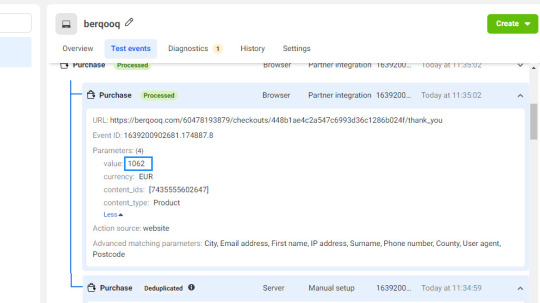

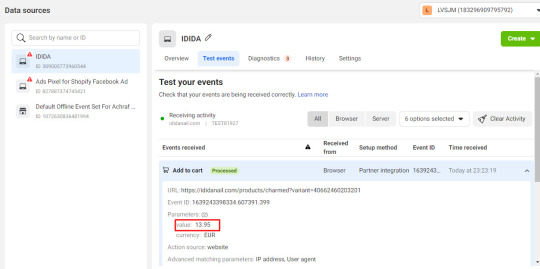
Facebook Conversion APi , Server Side Tracking via Google Tag Manager
0 notes
Text
Fun bit of etiquette difference between Reddit and Tumblr is if someone misuses a word on Reddit (wrong "their", "peak"/"pique", whatever) it's common to see someone in the replies correct it and the OP will be like "oh thank you. edited my comment to fix grammar error"
If you do that on Tumblr you get mauled with teeth.
#chrissy speaks#I believe this counts as helpful advice toward any reddit newbies here because of the API blackout#edit: thinking about this a little more seriously#i think it's because Reddit is a bit more of a public forum#and oftentimes cares more about appearing smart in conversation#and since the things you say are meant to be viewed by the public#and meant to be part of a back-and-forth with strangers#then correcting grammar is a sort of 'hey your fly is down' moment#to help the person prevent future embarassment#while tumblr is much more 'you're just fucking around with some friends'#and if a stranger comes up to you to go 'well actually' theyll seem like a total knob
1K notes
·
View notes
Text
Power of Natural Language Processing with AWS
Dive into the world of Natural Language Processing on AWS and learn how to build intelligent applications with services like Amazon Comprehend, Transcribe, and Polly. Explore the future of language-driven AI and cloud computing #AWSNLP #AI #CloudComputing
Natural Language Processing (NLP) has emerged as a transformative force in the realm of artificial intelligence, enabling computers to comprehend and generate human-like text. As businesses increasingly recognize the value of language-driven insights and applications, cloud platforms such as Amazon Web Services (AWS) have played a pivotal role in democratizing access to advanced NLP capabilities.…

View On WordPress
#AI Development#AI Services#Amazon API Gateway#Amazon Comprehend#Amazon Lex#Amazon Polly#Amazon Transcribe#Amazon Translate#amazon web services#aws#AWS Lambda#chatbot development#Cloud Computing#Cloud Services#Conversational Interfaces#Language Processing Applications#Language Understanding#Machine Translation#natural language processing#Neural Machine Translation#NLP#sentiment analysis#speech recognition#Text Analysis#text-to-speech#Voice Interfaces
4 notes
·
View notes
Text
having fun with the tumblr api, looking for conversations!
This elisp function in emacs lets me retrieve conversations from tumblr! The api doesn't have any documentation about /conversations.
The sid cookie was edited of course. I don't want my private conversations to show up here.
(let ((url-request-method "GET") (url-request-extra-headers `(("authorization" . "bearer") ("cookie" . "sid=aWX8ldphBKnKvrnStFz0jHRttkdfmvNhlfKHJnrdyxgl.a"))) (url-request-data "fields%5Bblogs%5D=avatar%2Cname%2Cseconds_since_last_activity%2Curl%2Cblog_view_url%2Cuuid%2Ctheme%2Cdescription_npf%2Cis_adult%2C%3Fprimary&participant=t%3Y-T8aKdASPs_51V8TQ")) (with-current-buffer (url-retrieve-synchronously "https://www.tumblr.com/api/v2/conversations") (buffer-string)))
Have fun exploring!
4 notes
·
View notes
Text

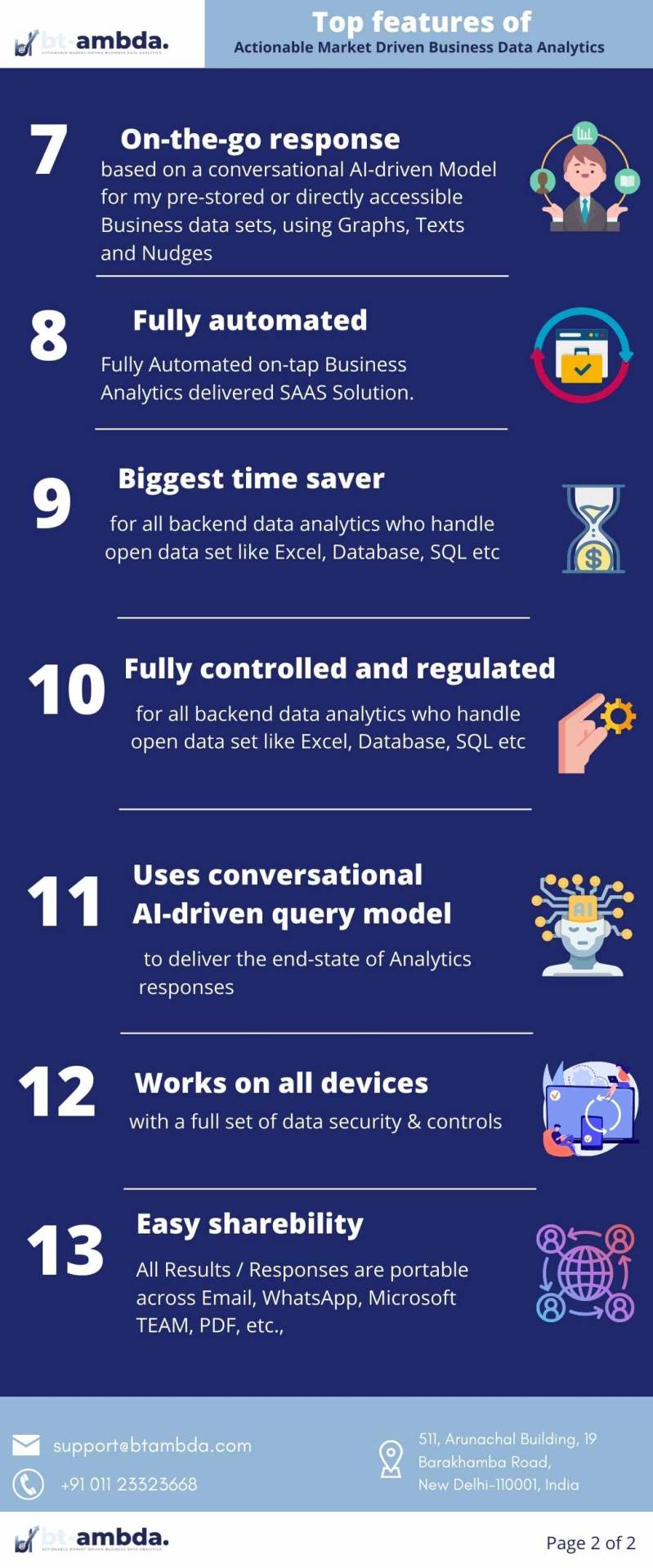
Convert your data into opportunities with BT-AMBDA Business Intelligence Application. Make business decisions by analyzing your enterprise data and getting insights there and then.
URL:-https://www.btambda.com
@bytechindia @bt_ambda
#dataanalyst#datavisualization#businessintelligence#business#opportunities#data#datainsights#datasecurity#businessanalyst#businesstool#conversation#artificialintelligence#shareability#fullycontrolled#timesaver#customization#apis#integration#notraning#quick…
2 notes
·
View notes
Text
Beyond Multichannel: Why an Omnichannel Strategy is Essential for Brand Loyalty
Let’s explore the exciting world of multichannel and omnichannel techniques. We’ll look at what an omnichannel strategy is and why implementing one is critical for building steadfast brand loyalty, especially in a competitive industry.
Customers interact with businesses through several touchpoints, including online, in-store, and on phones. Having a strategy that connects interactions across multiple channels is critical. It creates a consistent, cohesive brand experience.
Without this, customers become frustrated when information is inconsistent or they must repeat themselves. This erodes allegiance quickly! The omnichannel approach enables customers to interact with your brand when and where they choose seamlessly.
The benefits are enormous! Omnichannel clients return more frequently and recommend your brand to others. By meeting them where they are, you can build genuine long-term partnerships. This loyalty is marketing gold, keeping the competitors at bay.
So, fellow marketers, let’s shift our mindset from multichannel to omnichannel. This is how you create seamless experiences that set you distinct. When done correctly, it earns consumer loyalty, which boosts sales and growth!

The significance of client involvement and consistent user experience in today’s industry.
It’s critical to meet clients where they are at. Going multichannel involves having a presence on several channels, such as social media, websites, and applications. When you convert to an omnichannel approach, you want to connect all of those channels effortlessly. The goal is to give customers a consistent experience no matter where they encounter your brand. It is the endeavor to create personalized journeys for each unique consumer, designed precisely for them.
According to Accenture’s research, 44% of customers return and purchase after receiving a personalized shopping experience. But why is personalization so important? In a world where we are always attached to our smartphones, brands must prioritize consumer engagement. People want and demand personalized experiences; they want firms to remember their preferences, whether they are perusing a website or conversing on Twitter.
According to Epsilon, 80% of customers are significantly more likely to purchase from a firm that provides a personalized experience. This means that providing clients with a consistent experience entails far more than simply being available across several media. It is about providing a consistent experience every time customers interact with you. This also means no more sudden changes or differing messages across platforms, which could confuse. The transition from a multichannel to an omnichannel approach is altering the game for brands.
Companies are learning that to stand out and earn true loyalty, they must go beyond simply providing various forms of outreach.
Understanding the difference between multichannel and omnichannel strategies.
What Is the Omnichannel Customer Engagement Solution?
Connecting with clients through several channels has always been critical. People want seamless experiences across all digital platforms, including social media, email, and AI chatbots. Building strong relationships across platforms is essential for satisfying customers and standing out as a company.
The main advantage is that it allows you to create individualized interactions based on customer participation. By combining data points from several channels, you receive insights on how to tailor offerings to buyer wants and habits, which is a game changer for relationships and companies. Multichannel marketing is vital for long-term revenue and loyalty growth.
Having integrated solutions across touchpoints is no longer simply good practice; it is vital for success in the digital environment. Customers desire a frictionless experience whenever they interact with your brand. Bringing coherence to such engagements makes people happier while also accelerating your growth. Multichannel is becoming the new standard that all sensible businesses should aspire for. Those who realize their full potential will undoubtedly have an advantage over their competitors!
The Advantages of Using a Multichannel Approach
Having multiple ways to connect with clients can help a firm expand. Here are some reasons why.
Reach More People — By being active on social media, sending emails, and having physical stores, firms may reach a larger number of potential customers. You don’t want to miss out because some people prefer Instagram while others only check their email!
Strengthen Relationships — With various channels, you have more opportunities to communicate with clients and get to know them better. This leads to stronger ties and a community that cares more about your business. Personalized experiences based on their preferences result in satisfied, loyal consumers who provide valuable input to help you enhance your services.
More Sales- Getting people from discovering you to pulling out their checkbook is easier when many channels collaborate. Social media ads may expose consumers to products, emails can remind them to buy, and actual storefronts make it possible! This coordinated technique generates more money overall.
In short, multichannel marketing is extremely beneficial for getting your brand out there, interacting with the appropriate people, and increasing business.
More channels equal more opportunities!
Limitations of the Multichannel Approach.
Limitation 1: Integration challenges.
Coordinating marketing efforts across several platforms, such as social media, email, and websites, may be difficult and time-intensive. To maintain consistency for the consumer across all touchpoints, branding, messaging, and user experience must be seamlessly aligned. This needs to be scalable as the brand grows.
Limitation 2: **Data fragmentation.
With client interactions spread across multiple media, it is difficult to understand consumer behavior. This has a significant impact on the ability to generate individualized and targeted marketing efforts that are relevant to individual tastes and needs.
Limitation 3: Resource-intensiveness
Implementing and maintaining a multichannel strategy requires a significant investment of resources such as time, people, and technology. To properly manage their multichannel presence, businesses require powerful support systems that include everything from content production for many platforms to channel performance monitoring.
The Rise of Omnichannel Strategy.
Definition and Characteristics of an Omnichannel Approach.
What exactly is omnichannel, and how does it vary from traditional channels? The omnichannel marketing strategy is all about giving customers a consistent experience across all touchpoints, whether online, on their phones, or at a physical store.
Omnichannel, as opposed to multi-channel, considers all channels simultaneously. This implies that buyers can interact with your brand in a variety of ways while still feeling connected with ai chatbot api and unified data across the journey are two critical aspects of a strong omnichannel.
In today’s interconnected world, individuals expect businesses to understand their preferences wherever they interact, minimizing time spent searching. Omnichannel not only satisfies but anticipates that expectation by utilizing data and technology to offer relevant, timely messaging at all touchpoints.
Taking this approach allows businesses to increase customer involvement and predict consumer habits using data. A good omnichannel strategy involves reaching customers where they are while maintaining a consistent brand story throughout their journey.
Conclusion
The important takeaway here is that moving from numerous channels to a single unified channel that encompasses all touchpoints is critical for organizations looking to develop strong, long-term relationships with customers. We reviewed the major themes that demonstrate why it is so vital and helpful to embrace an omnichannel approach — it comes down to companies needing to integrate experiences across the board to drive growth in such a competitive landscape.
As we move, brands must identify this as a watershed moment and take strides toward an omnichannel strategy by combining everything into a single seamless consumer journey. If they do not adapt, they will fall behind, and Enablex can be their go-to solution for seamlessly executing this, providing them with the tools and backup they need to elevate their presence and how they engage users.
#chat bot api#ai chat api#chat ai api#api ai chatbot#omni channel chatbot api#conversational chatbot api
0 notes
Text

Revolutionizing Customer Interaction with WhatsApp Reply Button Bots
In today's digital age, businesses are constantly seeking innovative ways to enhance customer engagement and streamline communication channels. One such groundbreaking solution that has emerged in recent years is WhatsApp reply button bots. Leveraging the interactive buttons feature available in the WhatsApp Business API, these bots are transforming the way businesses interact with their customers, offering unparalleled convenience and efficiency.
#SMS Gateway Center#WhatsApp#reply button bots#interactive buttons#WhatsApp Business API#customer engagement#communication#conversational AI#user experience#automation#customization#efficiency#customer service#digital transformation#personalized#business operations#insights#data-driven#sales#marketing#customer support#interaction#innovation#technology#messaging#user-friendly#convenience#streamlining#branding
0 notes
Text
7 Must-Have Features of Pinterest Conversion Tag

Let’s take advantage of utilizing the full potential of the Pinterest Conversion Tag on your website by using Pinterest marketing strategy and incorporating the 7 must-have features. But before we start let’s go with the basics.
What is a Pinterest Conversion Tag?
The Pinterest Conversion Tag is a powerful tool for businesses looking to track and optimize their Pinterest advertising campaigns. By adding this tag to your website, you can gain valuable insights into the actions that users take after visiting your Pinterest ads, such as making a purchase or signing up for a newsletter.
What is Pinterest API?
The Pinterest API for Conversions is a powerful tool that enables advertisers to send conversions directly to Pinterest via a secure, server-to-server connection. By using this API, businesses can track and analyze the actions that users take after interacting with their Pinterest ads, such as making a purchase or signing up for a newsletter.
Now here are the 7 must-have features of the Pinterest Conversion Tag that every business should be using:
Track Multiple Conversion Events
This tag allows you to track up to 20 different conversion events on your website. This could be anything from a purchase to a newsletter sign-up, a product demo, or even a phone call. By tracking multiple conversion events, you can get a more detailed picture of the customer journey and optimize your ads accordingly.
Retargeting Capabilities
One of the most powerful features of this Tag is its ability to enable retargeting. This means you can show ads to people who have previously visited your website and engaged with your content but haven't yet made a purchase. By retargeting these high-intent users, you can increase your chances of converting them into customers.
Cross-Device Tracking
In today's multi-device world, it's crucial to track user behavior across devices. It supports cross-device tracking, allowing you to see the full customer journey even if the user switches between devices. This gives you a more accurate picture of your advertising ROI and helps you optimize your campaigns for maximum effectiveness.
Integration with Other Marketing Tools
This Conversion Tag can be easily integrated with other marketing tools like Google Analytics, Salesforce, and more. This allows you to centralize your data and get a more comprehensive view of your marketing efforts. By integrating with these tools, you can automate reporting, gain deeper insights, and make more informed decisions about your advertising strategy.
Custom Conversion Value Reporting
It allows you to assign a custom value to each conversion event. This means you can track the revenue or profit generated by each conversion, rather than just the number of conversions. By assigning custom conversion values, you can get a more accurate picture of your advertising ROI and optimize your campaigns accordingly.
Conversion Window Flexibility
This Conversion tag gives you the flexibility to set a conversion window that best suits your business model. This could be a window of 1 day, 7 days, 30 days, or even longer. By setting a conversion window, you can track conversions that occur within a specific time frame after a user sees your ad. This helps you better attribute conversions to your advertising efforts.
Easy Setup and Management
Finally, the tag is designed to be user-friendly and easy to set up. You can add the tag to your website using a simple code snippet or through your website's tag manager. Once the tag is installed, it will start automatically tracking conversions. Additionally, you can manage the tag and view conversion data directly from your Pinterest Ads Manager.
By leveraging these 7 must-have features, you can gain valuable insights into your Pinterest ads campaigns and optimize the Pinterest Ads Metrics for better results. Whether you're a seasoned Pinterest advertiser or new to the platform, the Conversion Tag is a powerful tool that can help you drive business growth.
So, are you ready to unlock the full potential of your Pinterest advertising? Start by implementing these key features and watch your conversions skyrocket!
0 notes
Text

whatsapp chatbot for business askeva
AskEva - The WhatsApp API & Chatbot Development Company
WhatsApp API is developed to help sales with lead generation and to stand out from others. AskEva WhatsApp chatbot automated customer service requests in every business to manage complexions. It is a highly-customized solution to use without hesitation. In a long-term opportunity, businesses can gain benefits from chatbot development.
more details...,
#best whatsapp chatbot#bestwhatsappapiprovider#whatsapp api provider askeva#whatsapp based chatbot service provider#whatsapp chatbot for automobile industry#whatsapp chatbot for business askeva#whatsapp chatbot for ecommerce#whatsapp chatbot service#conversational whatsapp chatbot
0 notes
Text
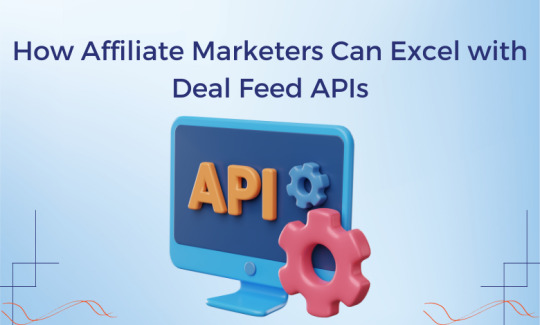
Affiliate marketing excels with a Deal Feed API by providing affiliates real-time updates on the latest deals, enabling timely and automated promotion of offers, dynamic content display, personalized promotions, increased click-through rates, efficient campaign management, comprehensive deal information, multi-channel integration, and improved reporting and analytics. This integration enhances the efficiency, relevance, and timeliness of deal promotions, resulting in improved user experience, increased engagement, and higher conversion rates.
0 notes
Text
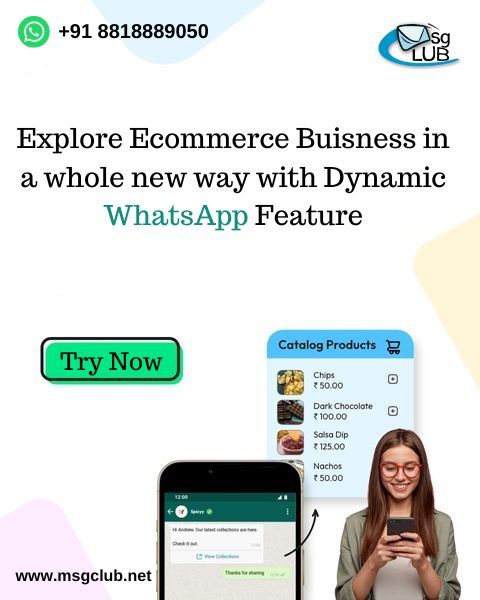
By using Whatsapp Ecommerce API inform your customers when things are back in stock. Inform them about new products on his whastapp buisness Number.Plan accordingly by real-time metrics on the Msgclub WhatsApp business Platform for deliveries, read rates, and more.We are all about making your customer shopping experience seamless and enjoyable. Thats why we are excited to introduce our WhatsApp Business Service - So through your customer can direct line to personalized assistance, product inquiries, and more! This process is fully automated by WhatsApp Business API for E-commerce.
#whatsapp ecommerce store#whatsapp business ecommerce#whatsapp ecommerce bot#conversational commerce whatsapp#whatsapp api for ecommerce#whatsapp marketing for ecommerce#whatsapp ecommerce api#whatsapp api woocommerce#whatsapp bot for ecommerce#ecommerce on whatsapp#whatsapp business api for ecommerce
0 notes
Text

Would you like to learn how to fetch real-time exchange rates and perform currency conversions effortlessly? https://tradermade.com/tutorials/how-to-use-the-currency-conversion-api-with-php-python-r-c-golang-javascript-examples-on-our-website. Whether you're a developer or just curious about currency conversion, this tutorial will help you get started.
0 notes